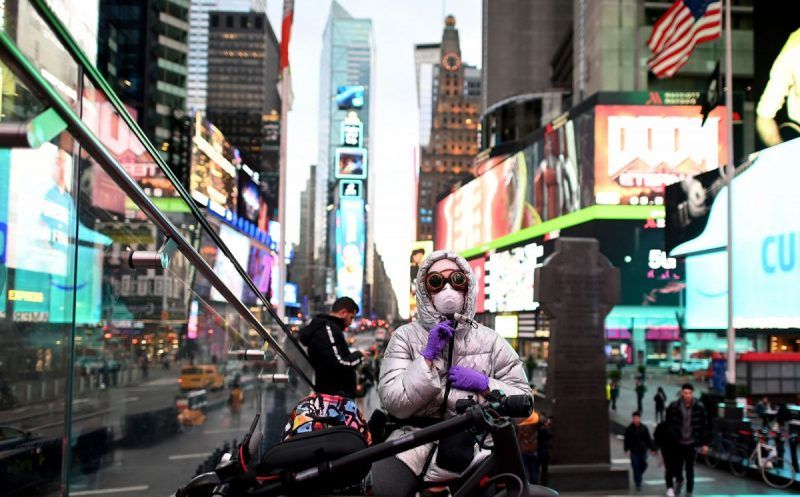
NEW YORK City—How do you tell New Yorkers to forget about the culture and booze and laughter and food and people that make this city worth living in, and go back to their tiny, overpriced apartments and stay there, alone? Some wind or snow would help, but last Saturday there was nothing but vague warnings from politicians that we should keep a safe distance from one another, which sounds like advice from someone who has never been to New York.
“I’m waiting for the government to tell me I should be more concerned,” one woman standing outside of a bar told me that night. Who was being absurd: the person going out for a drink in Lower Manhattan on a Saturday night or the reporter standing six feet away, wearing gloves, wincing at every tiny fleck of spit arcing out of his subjects’ mouths?
Less than twenty-four hours later, the government spoke, shutting down schools, restaurants, bars, and cultural institutions. A second wave of panic-shopping ensued. Men with sheepish grins noisily lugged boxes of beer away from bodegas and Trader Joe’s cut their hours for everyone’s safety.
Now, five days into the de facto quarantine, us lucky ones sit at home, sharing graphs and charts that map out New York’s rising number of cases and deaths against those in China, Italy, Iran. “I am the ghost of Christmas Future,” I texted my friends and family in Virginia. “This is not a joke. Tell your parents to stay inside.” My mom, who used to make me open doors at the mall for her, called to ask if she could take a walk with a friend who had been exposed to someone who had tested positive for Covid-19. It was “at a huge party,” and she assured me they would walk in the road, six feet apart. “Please don’t,” I told her. A few hours later, I’d be in a grocery store, exposing myself to the outside world for some chocolate and fresh produce.
On a normal day, my job as a reporter for Gothamist is to take in reams of information from interviews, social media, and public officials, and synthesize it in a way that is readable and understandable. Now there is too much information to process, and nearly all of it is almost comically depressing. Nurses call and tell you how their hospitals are overwhelmed. People with loved ones in prison describe confusion and fear. People in hospital gowns post videos to Twitter describing their symptoms. Your friends in the service industry lost their jobs. The owners of a local bar say they may not be able to reopen if and when this all passes. The governor tells me that everything has forever changed. I take my temperature a few times a day, re-reading the thermometer’s flimsy paper instructions to give myself some semblance of control, still unwilling to submit to a more accurate, rectal application, but it’s early yet.
Much has already been written about the rejuvenating effects of taking a walk, and this is partly true. There is the sun, here are delivery workers unloading mountains of packages or flying down avenues on electric bikes to bring someone food. A man behind the wheel of a slinky Mercedes waits for his fare on the Upper East Side wearing sunglasses, gloves, and a mask. The J train still clangs across the Williamsburg Bridge. New York City is still here.
But these same signs can feel ominous, or ridiculous. Why are some people risking their lives ferrying goods on the street while others are snug, forty floors above? Are those people in the park really playing Quidditch right now? A playground writhing with children in sixty-degree-weather feels downright sinister. I walk up six flights, rub disinfectant on my keys, scrub my hands, and fire up the Metropolitan Opera’s free stream. I’m told there’re too many people trying to access it now, and I have to wait in line.
Christopher Robbins is the city editor at Gothamist, a WNYC news site. Formerly, he worked for The Village Voice. (March 2020)
********************
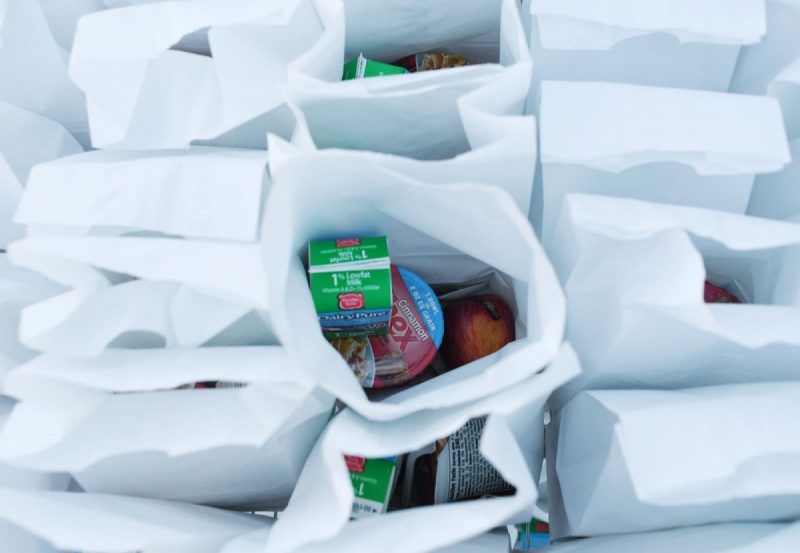
DENVER, COLORADO—I haven’t left our apartment, except for the occasional walk or run outside, in twelve days. I haven’t been in a public indoor space. The Sunday before last, my husband heard that someone at the high school a few blocks away had tested positive for Covid-19; the school is across the street from our gym, and it’s full of students when I usually go, in the late afternoon. Well, I said, I guess we have to stop going to the gym. He had a few writing classes he still needed to teach in person, so every time he left the house he stopped for more groceries.
Even so, he worried that we didn’t have enough, so on Monday he got up early and went to Whole Foods right when it opened. He came back visibly shaken by the experience, the atmosphere of panic. The store was so crowded people kept bumping into him, so at home he immediately threw all his clothes in the wash and got in the shower. Unpacking the groceries, I felt like crying. He’d gone without a real list, since we didn’t know what they would have. I felt like I was opening Chopped baskets full of random, exotic treats—bison steaks, miso broth, fresh halibut. He even thought to get tomato paste and a backup jar of mayonnaise.
Cooking is the only time I feel normal. I made a curry with the halibut, and topped it with the last of a bunch of fresh mint we had in the fridge. The next night I made pork chops, grits, and kale, and the following night I made a hash with the leftover pork. There’s something pleasurably game-like about figuring out what to cook every night, starting with whatever’s most perishable, limiting what I take from the freezer or pantry, incorporating scraps or a bit of sauce from previous meals, recursively. We’ve been eating well, so far, at least.
Last summer I heard the writer Chris Castellani talking about a character in his novel that he’d based on a friend. This friend was known to talk to his parents every day, and when people asked him why he did that, he’d say, “Because they’re still alive.” I’ve thought about that a lot, and in the past several weeks, I’ve started talking to my parents every day. My mother turns seventy this year, a few days after my parents’ fiftieth wedding anniversary; we were planning a family trip this summer to celebrate. We’ll probably have to cancel it, but we’re waiting until the last minute. My mother is about as high-risk as it gets, so I’m relieved that she is taking the virus seriously. Unfortunately, my father, a doctor, is still seeing patients. He feels that he can’t just abandon them. Many are elderly; a few have begged him not to retire before they die. Today he finally agreed to shut the office for two weeks. It will certainly have to remain closed longer.
I’ve been having a feeling, on and off, that I can’t describe—my inability to name it is its most distinguishing feature. I can’t decide if the symptom is confusing or confusion is the symptom. I feel it mostly in my head, but it isn’t a headache. It doesn’t exactly hurt. I sometimes say, My nerves are bad, as in The Waste Land. It’s appropriately vague. I sometimes say it hurts because that’s easier. I wish it were pain, in a way—being able to describe how I feel is a comfort, while not understanding produces a meta-anxiety. In a way I’m expanding my idea of pain, to include this new namelessness.
Elisa Gabbert is the author of three books of poetry. Her latest book is The Word Pretty, a collection of essays. (March 2020)
***************
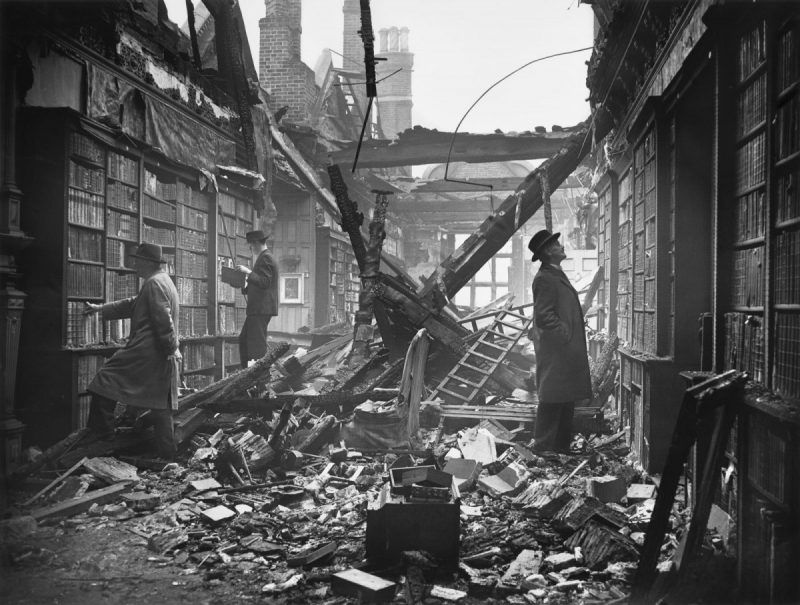
LONDON, ENGLAND—“One doesn’t normally take seriously what Boris Johnson says, but on this occasion there may be something in it,” my friend wrote earlier this week, canceling a party for his seventy-fifth birthday. Those of us above seventy are all self-isolators now. Johnson has told us we can expect to “lose loved ones,” the loved ones in question being mainly our elderly selves and people with—a now familiar phrase—“underlying health conditions.” He doesn’t say, “Some of you are going to die soon,” presumably because it sounds too frightening and medieval, like Death in The Seventh Seal. I have to admit that Johnson doesn’t look too good himself. Frankly, he looks scared and out of his depth. Being prime minister wasn’t supposed to be like this. It was meant to be a kingly occupation in which he could forever exercise his irony and good cheer and make his subjects laugh.
Inevitably, the spirit of the London Blitz has been invoked. On a recent news show, an American professor spoke generously when he said the stoicism that flourished in wartime Britain would surely see us through a pandemic. Americans, of course, were the audience for which the Blitz spirit was bottled and labeled. Humphrey Jennings’s brilliant ten-minute documentary London Can Take It! made the leading contribution, with its portrayal of ordinary people coping with terrors of aerial bombing in the autumn of 1940—old people sleeping in air-raid shelters, commuters picking their way through the rubble, scenes that were prefaced by the tell-it-like-it-is voice of the American broadcaster Quentin Reynolds: “I have watched the people of London live and die… I can assure you, there is no panic, no fear, no despair in London town.” The US had yet to enter the war. The film was finished in ten days and swiftly dispatched across the Atlantic, where a private screening was arranged for FDR. In the estimate of Jennings’s biographer, Kevin Jackson, it remains “one of the few films that have played some small part in changing the course of history.”
London wasn’t quite as heroic as the film suggested. Londoners were scared: Why on earth wouldn’t they be during a bombing campaign that killed 20,000 of them in the space of eight months? But it isn’t hard to believe that there was then a greater sense of public order and personal restraint—behavior that seems to have receded in the eighty years since. Panic-buying over the last week has emptied the shelves of British supermarkets for no good reason (there is as much food as ever), prompting squabbles in the aisles and the introduction of special opening hours reserved for the old and less fit. How shaming, then, at least for a certain British generation, to learn that in the virus’s new epicenter, Italy, citizens have behaved impeccably, buying no more than they need and singing Puccini from their Florentine balconies to entertain their quarantined neighbors.
A puzzle in all this is the mania for toilet-paper rolls, purchased in bulk, not by large hotels and prisons, but by people who look as though they live like the rest of us—in one house with, at most, two lavatories. Pictures show supermarket trolleys heaped high with them; disappointed customers complained that they couldn’t be had “for love nor money.”
It may be that some folk memory of an intimate difficulty has been awoken: the great toilet-paper shortage of 1944. An obvious benefit of self-isolation is that it gives you much more time to read, and this week I’ve been reading Norman Longmate’s account of civilian life in World War II, How We Lived Then, published fifty years ago and perhaps never read properly by me before. Longmate records that the shortage was severe enough to be raised as a question in the House of Commons, and for out-of-date office files to be commandeered as a substitute. A Surrey housewife said that she “loathed the indignity of entering a public lavatory and being asked whether I needed paper. I always tried not to need it and so appear mutinous.”
Many shortages persisted, and in several cases worsened, in the years after the war, but toilet paper was not among them. I grew up in a well-provisioned household, unlike my wife, who remembers pages of the Newcastle Evening Chronicle hung from a nail. We talked about this the other night: the reveries of self-isolation.
Ian Jack was the editor of The Independent on Sunday and Granta. He is the author of The Country Formerly Known as Great Britain and he writes regularly for The Guardian. (September 2018)
***************
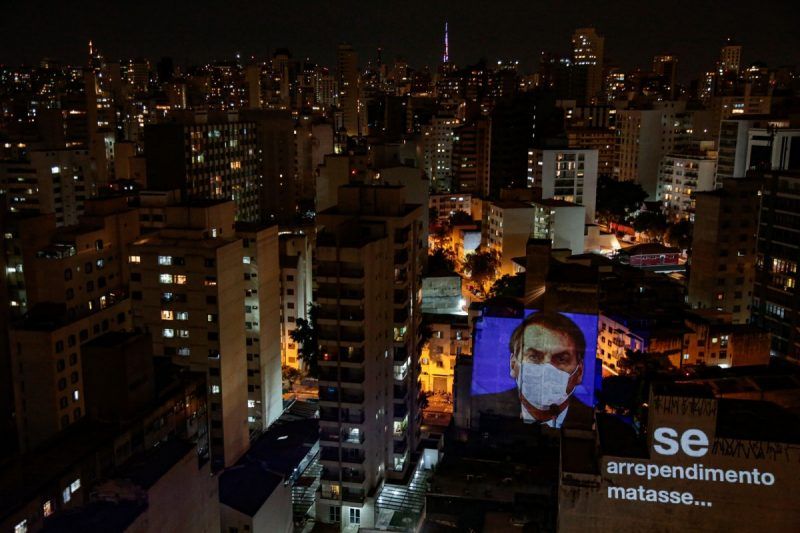
SÃO PAULO, BRAZIL—Over the last week, a powerful virus has been circulating among the toddlers in my daughter’s public nursery school. She spent two nights with a high fever and many others with a persistent cough that caused occasional vomiting. (She’s twenty months old.) But this happened a few days before the coronavirus started to spread locally in Brazil, so her pediatrician guessed it was common flu or something similar. Besides, many schools here are registering a number of H1N1 and Influenza B cases, which are also possibilities. I was eventually infected, too. We didn’t take any tests.
At that point, the country had registered two hundred confirmed cases of coronavirus and almost two thousand cases under suspicion. There was no countrywide confinement.
On Monday, when my husband went by the nursery school to deliver a sick note, the teacher casually mentioned that there were three confirmed coronavirus cases there. He immediately went home and broke the news. I was alarmed. My daughter apparently found the word funny and she couldn’t stop repeating it: “Co-ona-visss! Co-ona-visss!” while running in circles in the living room. (She was feeling a lot better.)
To be completely sure, I called the school. They said those were only suspicious cases. We stayed home, as we’ve been doing for a while now. My husband went to work, wondering when he would be allowed to do his job remotely. (He’s a tax inspector for the city hall.)
In Brazil, denial and confusion are the current official strategies to deal with the pandemic. President Jair Bolsonaro has been downplaying the crisis for weeks; he had called concern over the virus “oversized” and said that “other flus kill more than this.” On March 15, the president joined a pro-government street rally in Brasília, ignoring medical recommendations of social distancing. He shook hands and took selfies with supporters. More than fifteen members of his recent delegation to Florida have now tested positive for the virus.
On Tuesday, against all better judgement, a few of my friends gathered to play volleyball as if nothing was happening. Meanwhile, health officials reported Brazil’s first death from Covid-19. By then, the country already had three hundred confirmed cases. But we know these statistics are unreliable: almost no one is being tested for anything, after all.
On Wednesday, my friends decided to play volleyball again. Seriously. The death toll rose to four people, all of them from São Paulo. The mayor ordered the shutdown of all commercial establishments—including volleyball courts—with some exceptions such as supermarkets and drugstores. My husband was finally allowed to work from home. I had a low fever. My daughter seems to be recovering well.
On Thursday, I received the news that my daughter’s best friend, from the nursery school, is also on the path to full recovery—we only don’t know exactly from what. In Brazil, against the recommendations of the World Health Organization, only patients with severe symptoms of coronavirus are being tested. Streets are finally starting to empty out a bit. Death toll: seven.
It seems that the denial phase is almost over. Now we can concentrate on isolating ourselves with confusion as company.
Vanessa Barbara is a contributing opinion writer for The New York Times, and the author of two novels and two nonfiction books in Portuguese. (June 2018)
***************
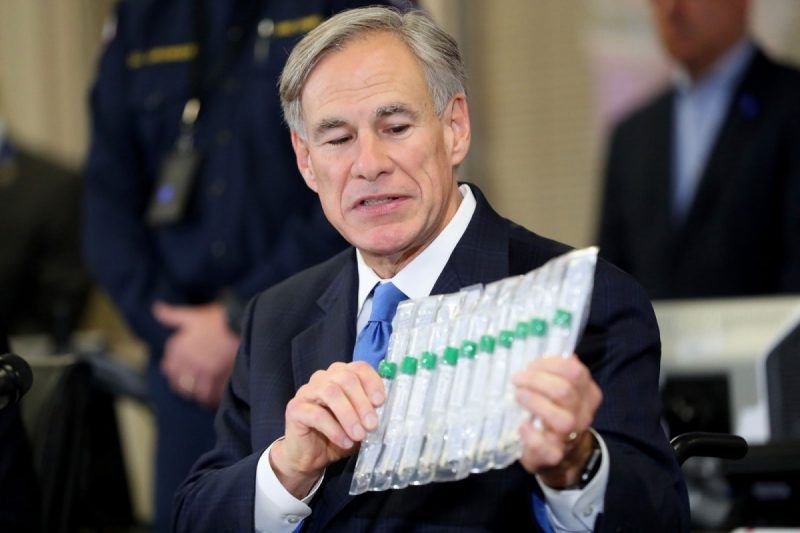
SAN ANTONIO, TEXAS—Today they began checking our temperatures on the way into the hospital. Two women in scrubs and masks stand at the entrance to the skybridge that connects the employee parking garage to the hospital, brandishing forehead thermometers. “97.2,” one tells me. My temperatures have been running a little lower than average, because I’m pregnant. I walk on, and a colleague of theirs (also in a mask) asks if I have had fever, cough, or shortness of breath, or if I have been exposed to anyone known to have Covid-19 “outside of work.”
I haven’t.
It is Texas, and we’re civil, so I thank the screeners for their work and one says, “Oh my gosh, thank Y’ALL!” and the other asks if she can touch my belly before she puts the sticker on my hospital badge indicating that I’ve been screened today.
“Go ahead,” I say. “My scrubs are clean.” I have just begun to feel my son kicking, but you can’t feel the kicks from outside. Even so, the lady smiles when she touches my body.
“Your first?” she asks.
“My first,” I say. We both use hand-sanitizer before I move off down the skybridge, pulling my white coat on. At one time, I imagined that I would hate being touched like that, or stared at, but now I am glad for the moments of joy that spark off around my pregnancy. The pandemic is mounting, and we doctors who practice in the cities that have been spared so far imagine that our days of ease are numbered. San Antonio is warm and humid and sprawling, but it is not isolated; the new coronavirus will come for us, too.
Even so, it’s a relief to be inside the hospital, where everyone knows what to do with ourselves. The nurses on the pediatrics ward still argue with my residents over which baby needs an IV placed; the pediatric gastroenterologist leads his gaggle of learners, reduced by two since the medical students have been sent home. Infants with jaundice lounge under blue lights, while in other rooms toddlers shiver from flu. We all worry a bit about our patients with medical complexity—the kids with odd-shaped hearts, the ones who have tracheostomies and feeding tubes and seizures that break through all the medicine to leave them shaking on the floor. How will they weather Covid-19?
The normalcy on the pediatrics ward has a summer-camp feeling, as if the sky will break open soon. Soon we may be pressed into other kinds of service—adult medicine, or ICU medicine, or whatever is most needful. I may be sent home for being pregnant; I may be called back. By most estimates, the fatalities will have peaked by July, when my son is due to be born. I will deliver at this hospital, the one that is familiar to me, and the pediatrician who cares for my son in his first days of life will be a friend.
But for all my friends in medicine, especially those in the ICU and adult medical wards, how much suffering lies between us and July? Will we go the way of Lombardy, where an estimated 20 percent of healthcare workers became infected? Or will this country pull it together, get us the masks and gowns and test kits and ventilators and back-up we need to save not only our patients’ lives but our own?
Every hospital has ghostly places, rooms where the dead kids gather to sing from empty beds. I yield little ghosts their swaths of air, but I do not want their song to swell into the hallways, to slip past the lips of my friends and fill their lungs with noise. I want us to all survive through summer, though I know that is probably a silly wish, one any child would make.
Rachel Pearson is a hospital pediatrician and assistant professor of medical humanities at UT Health San Antonio and its Center for Medical Humanities and Ethics. Her memoir on medical training in Texas is No Apparent Distress.

